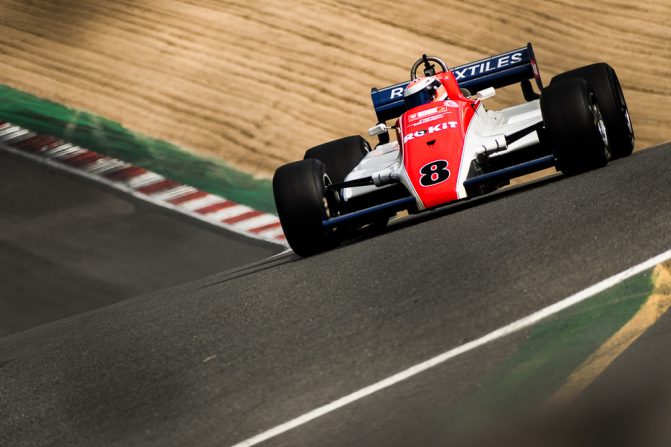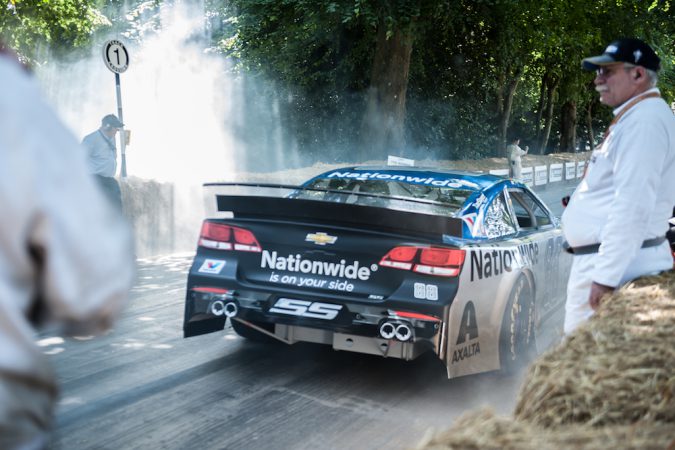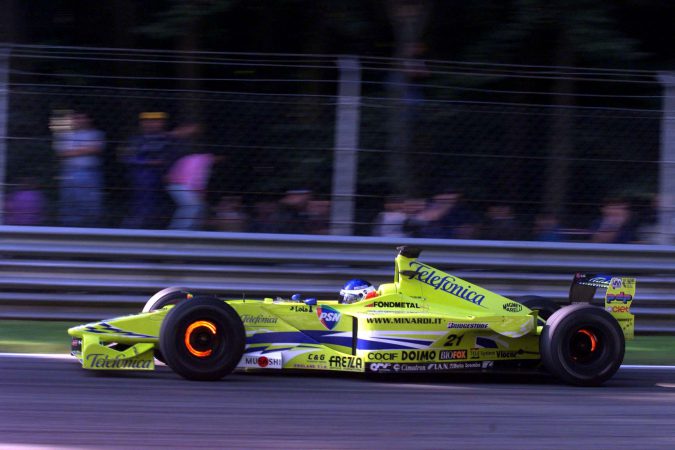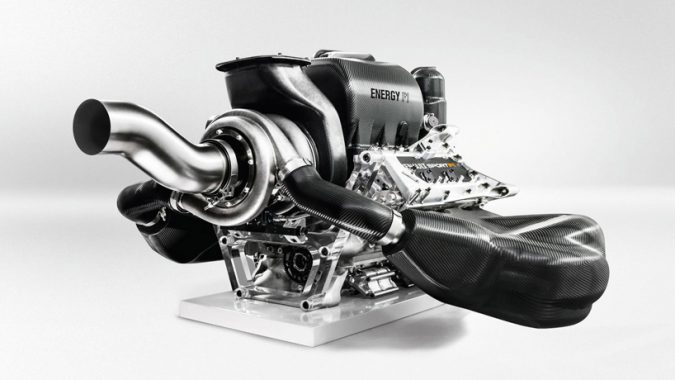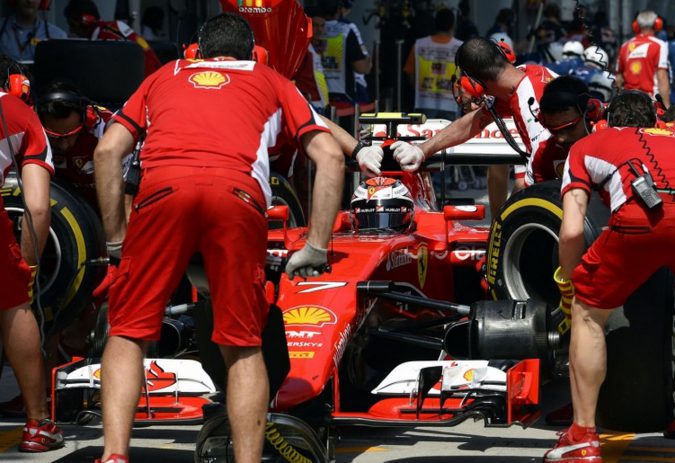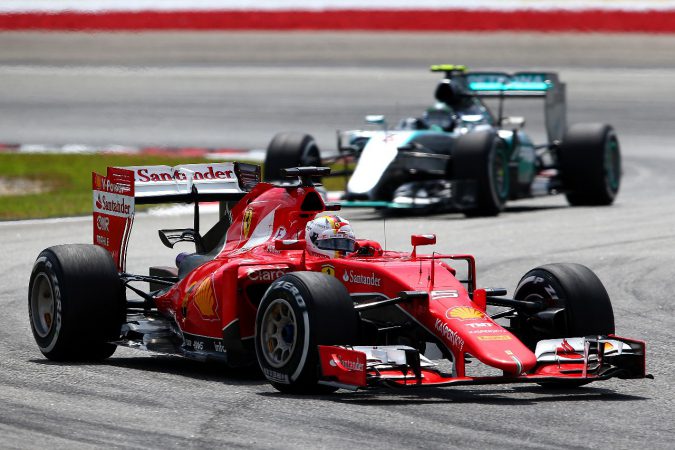The two seem to have one basic concept… A group of cars gathers around a track as crowds of fans overlook the meet in anticipation for the checkered flag to drop. Both these motorsports are recognized nationally and internationally. Fundamentally, they are generally the same, waiting for one driver to cross the finish line while the others lag. Both these sports have a star factor to them. There is so much more to NASCAR vs Formula 1 than the obvious visual variations – be it rules, tech, or format.
Anyone who has watched Formula 1 and NASCAR races more than once would know there is a clear distinction between the two. Many visual differences can be pointed out immediately along with a few game rules that ardent followers may be acquainted with. No 2 types of racing maintain the same set of rules, particularly when vehicles and strategies are concerned.
Difference Between NASCAR Vs Formula 1
At first, let’s talk about the most obvious differences between NASCAR and Formula 1.
NASCAR Vs Formula 1: The Cars
When you take a look at the actual cars of NASCAR and Formula 1, there are already visible differences. NASCAR’s chosen “Car of Tomorrow” sedan body is meant to be a strong projection of the cars that are used by the general public. The driver is secured inside and the wheels are just underneath the chassis. Apart from all the branding, it would not be very unnatural to see one of those cars on the highways of America.
However, you will never see anything similar to a Formula 1 race car on any standard road. Not with its open cockpits and wheels.
NASCAR vehicles are a customized look of a “stock” chassis from Chevy, Toyota, or Ford. On the other hand, in Formula 1, teams have to make their vehicles. F1 cars are designed to optimize performance in any atmosphere, with sharp noses that slice through air to reduce resistance. A Formula 1 car isn’t pretty and neither is it family-friendly, but it sure is fast.
Not that NASCAR cars are slow either. The average speed of a NASCAR vehicle is 200 mph whereas that of a Formula 1 is 233 mph. This ends up creating quite a bit of variation between the strategies required to drive in each type of race. For a live viewer, the difference of 33 mph doesn’t change the effect that the cars are zooming past you.
Weight And Aerodynamic
The slight speed advantage can be a result of both the F1’s weight and aerodynamic design. This is another key difference between NASCAR vs Formula 1. Naturally, Formula 1 cars are lighter and weigh about 1,500 pounds. A NASCAR automobile will be double in weight, coming in at 3,250 pounds on average.
The weight is carried by 2 different kinds of engines. For NASCAR, it’s a gas-powered 5.86-liter V8 engine that has to be refueled at timely pit stops during the race. Meanwhile, a 1.6-liter V6 Turbo engine is what powers a Formula 1 car, which is all you require for a vehicle that light.
Since NASCAR alters a “stock” body from popular car makers, their vehicles go for cheaper – around $25 million each. With all of its technology and optimization, Formula 1 is a bit pricier: a duo of F1 cars will cost a maximum of $470 million.
Fortunately for Formula 1 racers, the Federation Internationale de l’Automobile (FIA) which regulates the laws of Formula 1, is putting into effect a rule that will reduce the cost of building Formula 1 vehicles and level the playing field. This effect is set to go into order from 2022.
NASCAR Vs Formula 1: The Rules
All of NASCAR’s tracks are ovals, and cars can only ever turn left. In contrast, Formula 1 tracks come in any shape as long as there is one loop to tie everything together. Loops and twists of all kinds are thrown into the mix so F1 cars can move in every direction.
NASCAR prohibits telemetry. Once the driver is on the track in their car, they better pray and hope their team has optimized it as much as they possibly could. They can change their outlook and strategy, but the automobile itself cannot be adjusted. However, in Formula 1, measuring and laptops are completely fine, and an F1 driver is not banned from turning their vehicle in the middle of a race.
On the note of items that are banned, Formula 1 cars cannot come in contact when racing. Not only is it prohibited, but it is very dangerous given the high speeds they are moving at. In NASCAR, colliding against the competition is allowed and has become an integral part of most teams’ strategies.
While both Formula 1 and NASCAR include pit stops to ensure the vehicle can run uninterrupted for the whole race, the reasons behind them tend to vary. NASCAR races go on for longer, so they have to stop at least some time to re-tire and refuel. F1 rules state that a vehicle has to use at least 2 of the 3 available variants of types, so at least one pit stop is needed for that.
Formula 1’s equation does not cover refueling, though. It has been banned since the 2009 season for safety and cost reasons. F1 cars have no issue with the ban, though, as Formula 1 races are much shorter than their counterparts.
Rule Differences
NASCAR has more than 300 laps around the track whereas Formula 1 is generally only about 185 miles. So, a NASCAR can run for around 4 hours but the most a Formula 1 race would run for is 2 hours.
A major time-based rule difference between the two would be how much time matters. Similar to baseball, there is no official clock in NASCAR, so the race goes on until all the laps have been finished. In comparison, the authority may call a Formula 1 race after 2 hours, regardless of how many laps have been completed.
On an even bigger scale, the duration of the season varies between the 2 organizations. NASCAR has 36 races each season at the very minimum, and the number can climb to 38 if you take the Bud Shootout and All-Star race. F1, on the other hand, has only 19 races per year.
In both of these seasons, one driver has been crowned the “champion.” Another catch: the way the title is gained is very different. Both Formula 1 and NASCAR operate on points systems.
In NASCAR, the accumulated points decide who qualified for the end of the year playoffs. The winner is derived from the shortlisted 16 drivers through a series of races.
Formula 1, in contrast, determines the champion based only on points. Once the champion is at a score that is mathematically impossible for another player to earn and overtake them, the driver wins. They do not receive their award until the FIA Prize Giving Ceremony which is held after the end of the season.
NASCAR Vs Formula 1: Strategy
The length of the car, rule differences, and designs of each kind of race car has made drivers come up with wildly unique strategies to get the race in the bag.
Formula 1 is generally quite straightforward – you win if you have the fastest car. This is why teams are more than willing to invest money into research, engineering, and development; and this is why F1 cars are aerodynamically optimized to perfection. Formula 1 is recognized for being a highly technical, scientific sport for this exact reason.
That being said, there are some good plays an F1 driver can implement to even their odds. Undercutting is a process through which a well-timed pit stop allows the driver to switch between a softer, slower tire and a higher-performance one. This rewards them with better lap time and can help the driver pull ahead of opponents.
Several techniques like that, although, require the driver to be somewhat close to the front. If a driver does not do well in qualifying and ends up at the back for the beginning of the back, it’s unlikely that they will manage to rise to the top and win the race.
NASCAR is where the underdogs shine. Even the last car at the line can finish first. As every chassis is not equally aerodynamic, you can make strategy and physics your friend to come out on top – something Formula 1 is not forgiving with.
Rivaling
Pushing against other cars to reduce their speed while speeding yourself up is completely acceptable in NASCAR but banned in Formula 1. Direct right behind a rival car and using the slipstream to go front is a generic NASCAR move but can be very dangerous when performed with an F1 car.
All of this makes a NASCAR race much more unpredictable (and exciting). For example, in 2011, true overtaking moves were counted to be 80 throughout the whole Formula 1 season. For one NASCAR race of NASCAR, the lead changed 88 times in just one race.
NASCAR Vs Formula 1: The Business And The Audience
There is a huge gap between the business and prestige in NASCAR vs. Formula 1. Formula 1 makes a lot of money, racking up $1.5 billion each year. But at $3 billion in earnings worldwide, NASCAR has twice the net value of Formula 1. But where those earnings are channeled to is a bit reversed.
The highest-earning driver ever in F1 and present champion, Lewis Hamilton, makes about $40 million a year, whereas the best NASCAR drivers get less than $10 million – salary and bonus inclusive.
Formula 1 attracted 4 million people to the races in 2019 but NASCAR saw 500,000 fewer people. In-person, Formula 1 may have slightly more viewers, but it’s more of an international sport. Races take place all across the globe, including 1 in North America. However, NASCAR takes place almost all around the United States. And even the U.S. considers it to be a “regional” sport.
And lastly, from a business point of view, NASCAR is an organization that is self-governed and dedicated entirely to the game. Formula 1, on the other hand, is only a part of the FIA, which also regulated many other motorsports organizations.
NASCAR Vs Formula 1: Other Differences
As there is no need to refuel, the average time of a Formula 1 pit stop is 2.4 seconds only. NASCAR takes a whole 10 seconds more, rounding up to 12 to 16 seconds to get the car back on its wheels.
Occasionally, towards the end of the race, the pit crew only changes out 2 tires and refuels, or might just throw a bit extra gas in the car without changing the tires. The latter is termed “splash and go.” Since there isn’t much to do, these take less time than a complete NASCAR pit stop.
Even though both organizations maintain a points system, the winner of every NASCAR race gets 40 points. F1, by contrast, gives only 25 points to the winner of each race.
As we go over the past and arrive at the present, the differences are still glaring. Especially in the immediate present, with these organizations’ approach to COVID-19. NASCAR has left the onus on drivers and teams completely to keep themselves safe so they don’t have to waste COVID testing kits. Formula 1 goes the extra mile on safety and tests everyone involved with the sport.
Why Formula 1 Cars Are Faster Than NASCAR Cars
We can pinpoint 5 key differences between Formula 1 and NASCAR that can explain just why F1 is what performance lovers cannot get enough of.
- Acceleration And Deceleration
- Design Dynamics
- Aerodynamics
- Power-to-Weight
- Race Formats
The performance of any NASCAR or F1 car is heavily regulated – and in different ways. To NASCAR, the role of the driver is what gets preference in determining the overall performance of the car as well as the result of the race, while F1 is focused on making the fastest car and finding the newest technology to achieve marginal gains.
1. Design Dynamics
Formula 1 is leaps and bounds ahead of NASCAR when it comes to technical innovation. NASCAR cars are made on the same chassis with manufacturer-specific body shells, the usual four-speed manual transmission, the same power output, and engine size, and their engines also have the same design with certain different engine parts used to distinguish between the manufacturers. This allows the drivers to race closer, overtake during races, and make driving skills a part of the equation.
NASCAR cars are bulky (in comparison to F1) sedan-style vehicles that weigh a minimum of 3,200 pounds with a big 5.8-liter V8 engine that generates 750 hp on tap, goes up to 9,000 rpm, and is connected to a four-speed manual transmission.
Futuristic is one word that can perfectly describe an F1 car. From the chassis to the suspension parts, clutches, engines, steering wheels, and even parts like rear and front wings are unique to each team and often a team secret.
These open-cockpit, open-wheeled race cars are 1,604 pounds in weight. In addition, they’re powered by a 1.6-liter V6 turbocharged engine that revs to 15,000 rpm, and generates 800 hp.
This is then coupled with an eight-speed semi-automatic transmission that can change gears in split seconds. The intricate and complex arrangement of aerodynamic advancements helps improve downforce and produce massive levels of tractions – similar in a way to jet fights cutting through the air.
2. Power-To-Weight
With similar HP generation, in the battle of NASCAR vs. Formula 1, the cars of Formula 1 should have close to the same acceleration figures and top speeds. What differentiated a Formula 1’s performance is its weight: it weighs only half of a NASCAR.
A vehicle’s power-to-weight ratio is quite indicative of its performance, more so than its horsepower figures.
From its extremely powerful engines, Formula 1 cars generate 800 hp to push a 1,604 pounds vehicle around a race track. With the 750 hp a NASCAR produces, it has to move around a 3,500 pounds car. The power-to-weight ratio of these vehicles is 0.498 hp/lb. and 0.233 hp/lb. respectively.
In theory, an F1 can accelerate to 62 mph from 0 in under a second. However, that kind of power cannot be transformed to forward motion at low speeds as a result of traction loss. In other words, the car would barely move and the tires would burn out.
With that high power-to-weight ratio, an F1 car can accelerate to 200 mph from 0 in 9 seconds. Whereas a NASCAR can climb to 160 mph from 0 in those same 9 seconds.
3. Acceleration And Deceleration
The impressive power-to-weight ratio of a Formula 1 doesn’t only allow it to accelerate from 0 to 100 mph at an unbelievable speed, but it also allows the vehicle to return to 0 in under 5 seconds. This acceleration and deceleration are what would set an F1 apart from the rest.
These two forces also play big roles in NASCAR along with Formula 1. It depends on how the engineers handle these forces. These cars are not only made to tolerate those forces but also use them in their favor to improve performance.
A Formula 1 produces an acceleration value of 1.45 Gs up to 125 mph. This means the driver’s head and neck are pushed backward by a force 1.45x greater than the gravity on Earth. As speeds go over 200 mph, drivers experience 4.74 Gs, making their head weight almost five times more.
The most remarkable aspect of an F1 car would be its deceleration rather than its acceleration. The driver feels a deceleration force of 6.78 Gs. With its improved aerodynamics, an F1 car is glued to the road surface so when a driver releases the throttle and stops, it will slow down incredibly fast. When an F1 drive does engage a car’s braking power, it could be enough to bruise their ribcage.
4. Aerodynamics
Increasing downforce (downward force exerted on the race car’s wheels by the air) and reducing drag (the resistance caused by air when passing through it at high speeds) are the 2 important zones that aerodynamics focus on for stellar performance in NASCAR vs. Formula 1.
When an untrained eye compares a Formula 1 and NASCAR’s look, the aerodynamics of the latter may appear to be unsophisticated. Yet, it implements the same policies as F1 to cheat air. The difference lies in the way the aerodynamicists can cheat the air.
NASCAR’s technology includes wide and low front spoilers, steeply placed windscreens that are more slippery through the air, tunnel-shaped body shells, and tall rear spoilers to reduce the air resistance of the car while improving its downforce for traction. Aerodynamicists at NASCAR aim to promote overtaking and drafting to improve the game.
An F1 team’s aerodynamics will push the envelopes of technological contributions by investing millions of dollars in development and research each season to lower their vehicles’ lap times by actual tenths of a second every lap.
With many rights- and left-hand corners of different speeds, the aerodynamics of a Formula 1 race car is more focused on enhancing grip than looking to decrease drag for elevated speeds.
Aerodynamic downforce keeps F1 cars close to the ground with such a force that they could drive upside down through a tunnel (theoretically). All surfaces of a Formula 1 channel and shapes air over, around, and under it.
5. Race Format
Ultimately, the performance of the race cars in any NASCAR or Formula 1 is heavily reliant on the DNA of the same. NASCAR races can be compared to marathons while F1 races are sprints.
There are only two to four left-turns needed in each race. So, NASCAR drivers concentrate on keeping high speeds and relying on their brakes as little as they can.
Is Formula 1 Harder Than NASCAR?
In comparison to the muscle trucks and cars of NASCAR, F1 cars are faster, trickier to drive, and far more sophisticated. But NASCAR comes with its own set of unique challenges. With brutal racing and crashing being a regular incident, it takes a great deal of effort to avoid a fiery crash and come out a champion.
In Conclusion
While NASCAR and Formula 1 are very different motorsports, there is still common ground for fans of the two to come together and enjoy the spirit of the game, even if some fans love to battle between NASCAR vs. Formula 1. Following both seasons allows the general viewer to learn more about the art and science of car racing. Whether it’s the power of NASCAR or the luxury of Formula 1, you won’t regret sitting down to watch any.

